Stages of life
Andreas Kuhnlein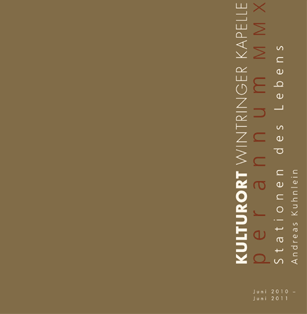
The meeting with old pilgrimage sites, like this former priory church in Wintringen has something mysterious for me. My sculpture cycle, which I created for this place, is characterized by the effort to bring something to the language, which could only arise in interaction with the themes of this place.
Andreas Kuhnlein

Film collage for the exhibition
Approach
Andreas Kuhnlein accepted the invitation to visit the cultural site Wintringer Chapel in late summer 2009. The sculptor was a guest to sense whether he could respond to the place and its impulses with his art. He was invited for per annum MMX with his talent to create a work that should succeed in creating a productive tension and for the viewers of the annual cycle, spiritual and aesthetic meaning. So to speak, to sound out and grasp the future, the past and the surrounding, to bring it together again in the end in his art.
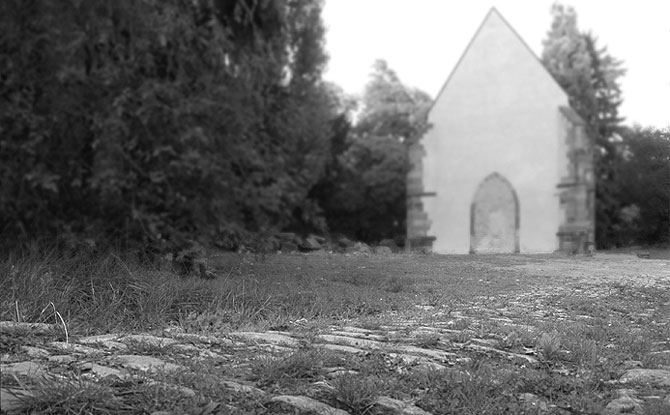
The cycle of figures "Stations of Life", which he created in the following months, especially for the site within the framework of per annum MMX, refers to the cross-temporal effect of places that are understood by people in different intensities, as places of longing, as sacred places, as places of pilgrimage.
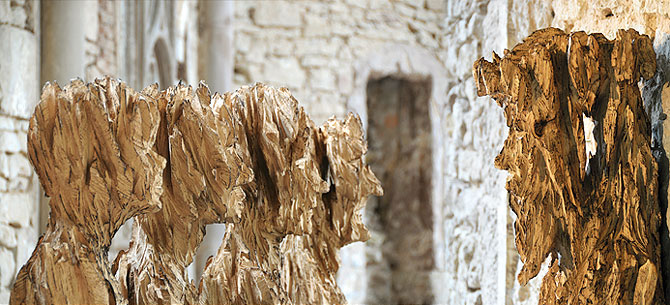
The group of works includes four head figures (Childhood I Youth I Adulthood I Old Age), a life-size pilgrim and a Christ head. The positions of the individual wooden sculptures follow the imaginary line of movement defined by Kuhnlein when opening up a (life) space: approach, arrival, change of view, pause, realization, departure. On this line of movement a woman, a pilgrim, leads through the figurative program.
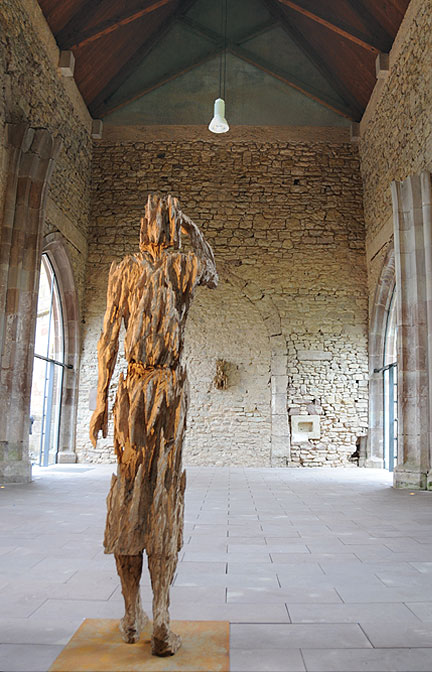
Visual language
The inimitable expression with which the group of works "Stations of Life" presents itself in the Wintringer Chapel goes far beyond the mere depiction of human postures. Andreas Kuhnlein is one of the most important contemporary German sculptors.
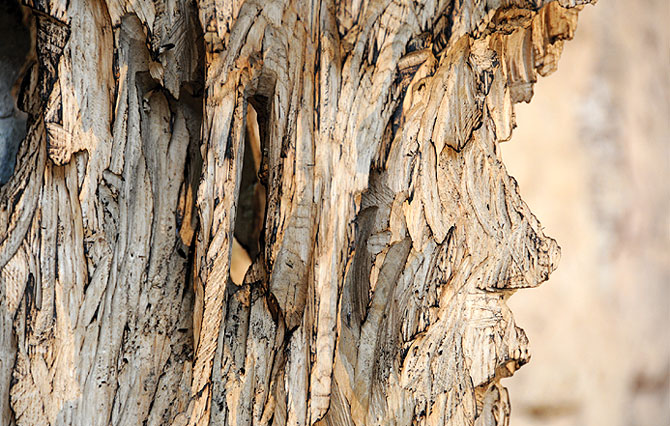
Already the small sample of his artistic work for the cultural site Wintringer Chapel underlines his extraordinary ability to evoke in the wood sculptural interpretation of the respective figure a more of reality and presence as well as a decipherable message for the viewer. Depending on the angle of view, the superficially furrowed appearances always release new and unpredictably subtle and profound expressions of human traits.
Andreas Kuhnlein's extraordinary visual language is undoubtedly shaped by the environment in which the sculptor grew up and still lives and works today. The rural environment, the mountain world of the Bavarian Chiemgau, the omnipresent nature, especially the world of trees, are what find their expression in his sculptural work. The trees, always brought to death by the force of nature, provide the artist with a message decipherable for him, which, through his talent with chainsaw and chisel, peel out into images of people.
Thoughts on the works of Andreas Kuhnlein
The philosopher looks with a mixture of envy and bad conscience at the return of the images in the context of humanly understandable questions of meaning. Since philosophy has fallen into crisis - because in postmodern openness it no longer dares to answer the questions of truth and happiness with certainty - the visual arts have exploited a gap for the creation of meaning. Because in postmodern media arbitrariness the possibilities of the image are used in a beguilingly sense-destroying and manipulated suggestive way, images that disillusion and create meaning could give courage. Not only the philosopher, but everyone who is interested in a life that is in truth successful, is drawn into the picture in an expressive way. The artist does not organize a pale image of imagination, he cuts a matrix in which future perspectives are hinted at.
Prof. Dr. Alexius J. Bucher (excerpt from the text "Menschenenbilder | Sinnstiftend")
The drama and expressiveness that have always been intimately associated with the visual arts reach a new and contemporary height in the work of Andreas Kuhnlein...
Wim van der Beek, art critic, Holland, 2002
Andreas Kuhnlein emphatically challenges his audience to reflect on their earthly existence. His tree art with its craggy protagonists in existential situations is as elegiac as it is narrative, as secretive as it is eloquent, and belongs in the circle of weighty 20th century sculpture...
Dorothee Baer-Bogenschütz, art journalist, 2003
Short vita
Andreas Kuhnlein, sculptor
Andreas Kuhnlein, born in 1953 in the Bavarian Chiemgau, regards the tree as an essential phenomenon and synonym for man. From hardwoods of dead and uprooted trees he elicits an image of man that is characterized by vulnerability and transience. A tree with its annual rings, Kuhnlein knows, carries the time that has passed just as much within itself as a human face.
His works have been shown in over 140 solo exhibitions and more than 120 exhibitions in 15 countries. Artistic accompaniment of Council of Europe and national exhibitions were also granted to him. Numerous of his sculptures can be found in public spaces such as the Bavarian Ministry of Science and Art, the Berlin City Museum, the Dresden Cathedral, the Sculpture Museum in The Hague, the Teachong Lake Cultural Park/
In 2005 Kuhnlein was awarded a professorship at the Art Academy in Luoyang/
